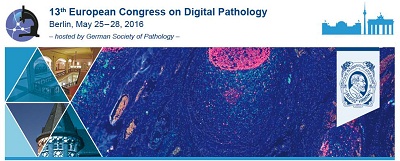Anatomic Pathology Structured Report Under FHIR
Abstract
Introduction/ Background
The last version of profile for the structured report of IHE was created 2011(IHE). Many discussions took place to improve and adapt the model of described document models for clinical practice. The working group developed xxx templates to cover e.g. the main tumor locations and the requirements of various organizations about tumor documentation (e.g. CAP, national societies of pathology). The complexity of a Structured Report Document based on IHE and HL7 CDA structured increased. Up to now no German software vendor supports these templates directly. Another strategy was suggested by the German Working Group: the IHE should provide generic models usable for the other do- mains in pathology. But the general problem of missing implementation was not solved. The development of Fast Health Interoperability Resource (FHIR) began in 2012 and started a fascinating movement to prioritize the implementation over the theoretical correctness. The resources, documentation and examples are completely open and available under http://wiki.hl7. org/?title=FHIR .
Aims
In a first approach we started to “translate†the structured pathology report based on the requirements of the technical framework. The aim was to analyze the usage of FHIR resources for the Anatomic Pathology Structured Report, simplify the document structure and increase the flexibility of document handling.
Methods
At first a complete report was created based on the CDA-XML-structure and model of the IHE Anatomic Pathology Working Group. The data based on a real, but anonymous case (many thanks to Prof. Haroske, Dresden, Germany). If possible each segment of CDA report was mapped to FHIR resources. The FHIR report consisting of different internal and external document fragments (resources) was evaluated by a public available FHIR communication server (http://spark.furore. com/fhir) to validate and verify this document.
Results
A first FHIR based structured report was created and validated against a public available FHIR server (http:// spark.furore.com/fhir). FHIR allows to create different document structures for any type of document: a document only with inside resources or a document with inside and outside (linked) resources. Our example consists of resources embedded in the main document file and linked resources. The FHIR document allows a great flexibility related to the document resources as well as data files. It is possible FHIR documents as XML, JSON (JavaScript Object Notation) or RDF (Resource Description Framework). Due to these various possibilities FHIR documents can be used in a web based application context easily.
Downloads

This work is licensed under a Creative Commons Attribution-ShareAlike 4.0 International License.
Authors who publish with this journal agree to the following terms:
1. Authors retain copyright and grant the journal right of first publication with the work simultaneously licensed under a Creative Commons Attribution License that allows others to share the work with an acknowledgement of the work's authorship and initial publication in this journal.
2. Authors are able to enter into separate, additional contractual arrangements for the non-exclusive distribution of the journal's published version of the work (e.g., post it to an institutional repository or publish it in a book), with an acknowledgement of its initial publication in this journal.
3. Authors are permitted and encouraged to post their work online (e.g., in institutional repositories or on their website) prior to and during the submission process, as it can lead to productive exchanges, as well as earlier and greater citation of published work (See The Effect of Open Access).
4. In case of virtual slide publication the authors agree to copy the article in a structural modified version to the journal's VS archive.








